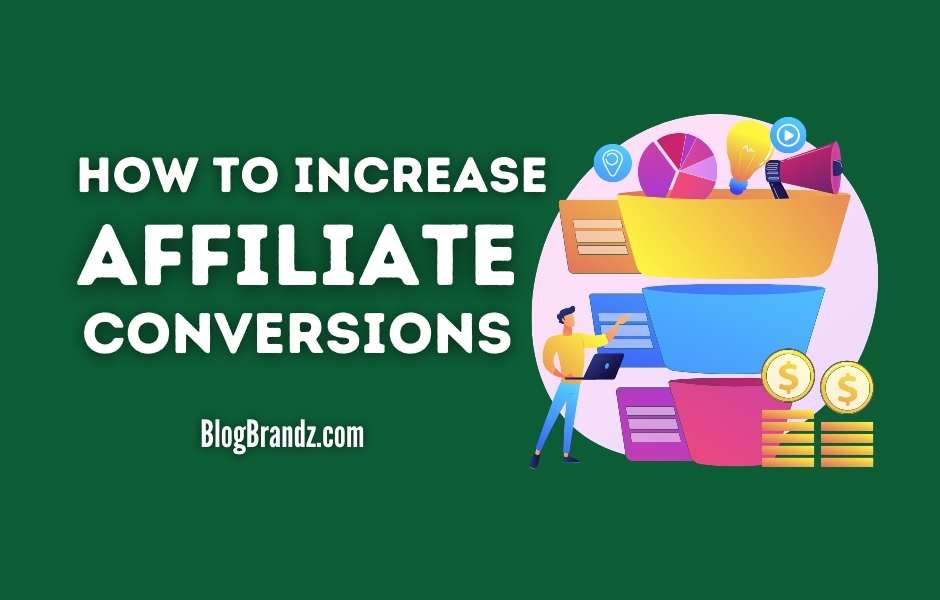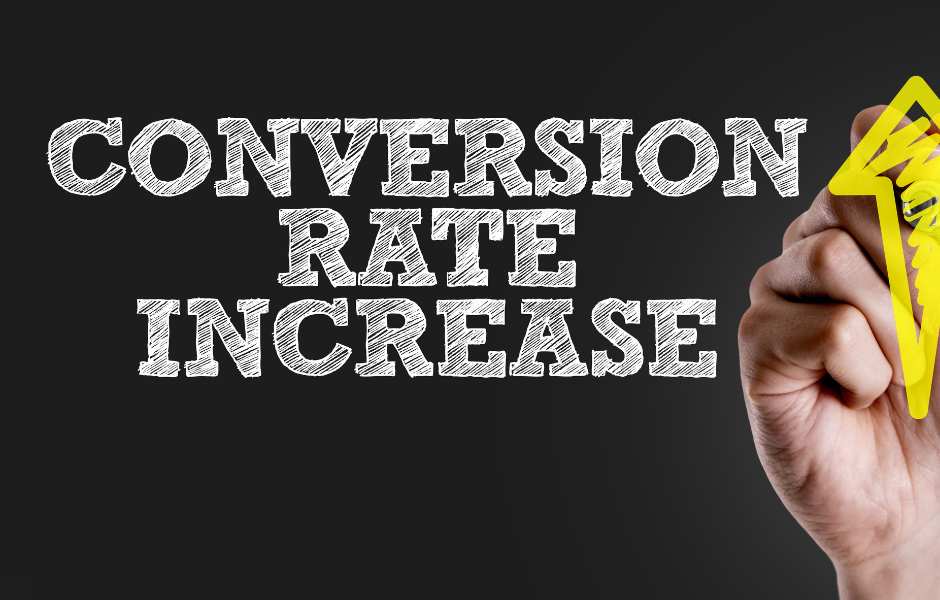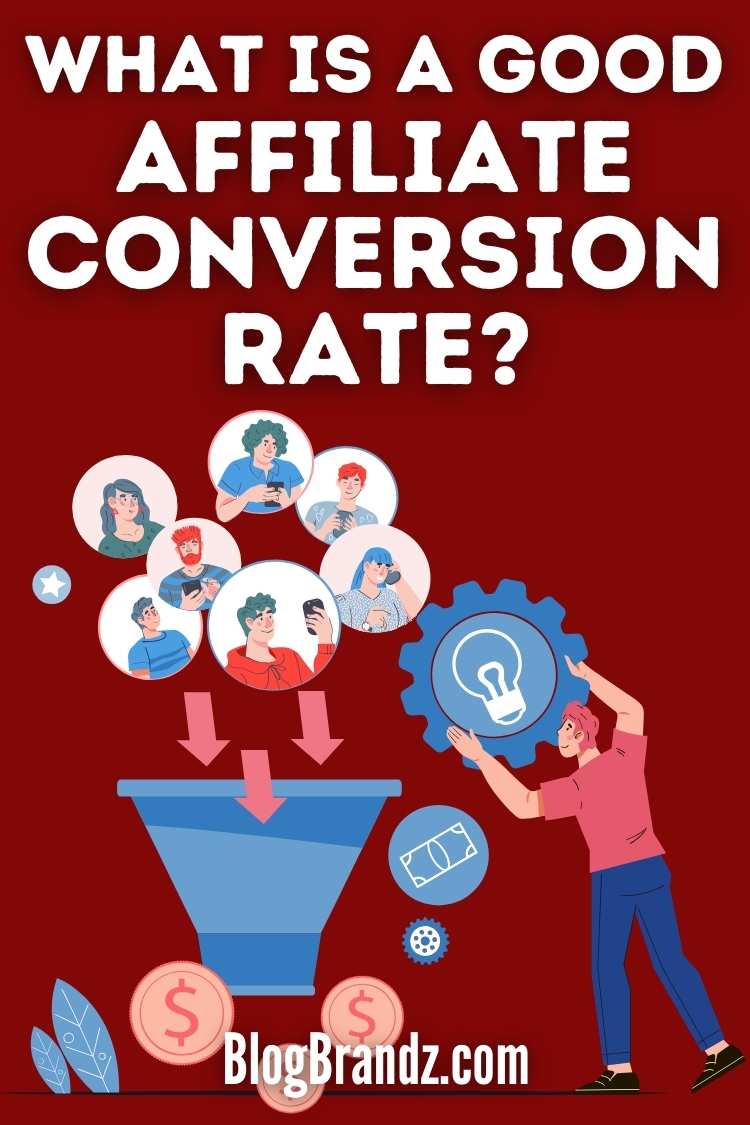
Discover how to increase affiliate conversion rates with the best affiliate conversion strategies to get more traffic and sales online.
Affiliate marketing offers a powerful way to generate online income, but driving traffic alone isn’t enough. The key to success lies in converting clicks into sales.
Imagine transforming your affiliate website into a high-converting platform where your audience trusts your recommendations and your earnings grow steadily.
This isn’t a far-off dream — it’s achievable with the right strategies. This article explores actionable tactics to boost your affiliate conversions.
From understanding your audience and optimizing content to leveraging effective tools, we’ll provide the insights you need to enhance your affiliate marketing efforts and see real results.
Contents
How To Increase Affiliate Conversions
Increasing affiliate conversions involves a mix of strategies that focus on attracting the right audience, providing valuable content, and optimizing your marketing efforts. While increasing traffic to your website is important, it doesn’t guarantee more conversions.
Conversion rate depends on various factors like the quality of traffic, relevance of your content, user experience, and the effectiveness of your call-to-action. Focusing on these aspects can help improve your conversion rate even with lower traffic volume.
Here are some key tips to enhance your affiliate conversions:
#1. Know Your Target Audience
Understanding your target audience allows you to tailor your content and promotions to meet their specific needs and interests, increasing the likelihood of conversions.
Here’s how to do it:
- Identify Your Target Audience:
Determine your target audience, what they need, and the problems they face. Create detailed buyer personas to tailor your content and promotions to their specific interests.
- Define Their Characteristics:
Identify your target audience’s demographics, interests, and pain points. This helps you create content that meets their needs.
- Research Their Needs:
Use customer surveys, social media insights, and keyword research to understand what your audience is searching for and interested in.
- Segment Your Audience:
Use analytics and customer data to segment your audience, allowing you to deliver more personalized content and offers.
In the Target Audience Training Course, you’ll learn how to identify your ideal customer, pinpoint your perfect audience without spending a dime, unearth the power of data to craft a customer avatar and watch your targeted traffic campaigns and content soar.
#2. Choose the Right Product-Market Fit
Choosing the right product-market fit is crucial in affiliate marketing as it ensures relevance to your audience, builds trust, boosts conversion rates, enhances audience engagement, and maintains a positive brand reputation.
Here’s how to do it:
- Select Relevant Products:
Ensure the products or services you promote align with your audience’s interests and needs. A strong product-market fit increases the likelihood of conversions.
- Research and Test:
Evaluate different products to identify those that resonate best with your audience. Test various products and monitor conversion rates to find the most effective options.
- Align with Your Niche:
Choose affiliate products that are relevant to your niche and audience. Promoting products that fit your content helps build trust with your audience.
- Use the Product Yourself:
Whenever possible, use the product yourself or conduct thorough research to provide honest and authentic recommendations.
#3. Create Content That Converts
Creating content that converts requires a strategic approach that focuses on providing value to your audience while effectively promoting affiliate products. Focus on creating valuable, informative, and engaging content that resonates with your audience and gets them to click the buy button.
Here’s how to do it:
- Leverage Multiple Formats:
Use multiple content formats such as videos, infographics, and podcasts to appeal to different preferences and increase engagement.
- Informative Reviews:
Create detailed and unbiased product reviews that highlight the features, benefits, and drawbacks of the product.
- How-to Guides and Tutorials:
Create engaging video tutorials or how-to guides that demonstrate how to use the product or achieve a specific goal related to the product.
- Comparison Articles:
Compare different products or brands to help your audience make an informed decision. Use comparison tables and visual elements to highlight differences and add a unique touch.
- Unboxing Videos:
Unboxing videos can be a powerful tool for promoting affiliate products, as they provide a visual and experiential showcase of the product, helping potential customers make informed purchasing decisions.
High-converting content directly influences the audience’s decision-making process, engages them effectively, and ultimately drives them to take action, leading to higher conversion rates and increased affiliate earnings.
#4. Build an Engaged Email List
Building an email list is important for affiliate marketing because it allows you to directly communicate with your audience, nurture relationships, and promote affiliate products effectively.
It helps you stay top-of-mind with your audience, drive traffic to your affiliate links, and increase the chances of conversions. Here are some best practices to increase affiliate conversion rates through email marketing:
- Collect Email Addresses:
Offer incentives like free ebooks, checklists, or exclusive content to encourage visitors to subscribe to your email list.
- Write High-Converting Emails:
Learn how to write high-converting emails that engage your audience and drive them to take action. Track email conversions to analyze the performance of your campaigns and optimize them.
- Engage Regularly:
Send regular newsletters with valuable content, updates, and exclusive offers to keep your audience engaged and drive traffic to your affiliate links.
- Segment Your Email List:
Divide your email list based on interests, behaviors, or demographics to send targeted and relevant content, increasing the likelihood of conversions.
- Personalize Your Emails:
Use personalization techniques to address subscribers by name and tailor content based on their preferences, increasing engagement and click-through rates.
- Test and Optimize:
Conduct A/B testing on your email campaigns to understand what resonates best with your audience and optimize your emails for better performance.
- Provide Value:
Focus on providing valuable content in your emails, such as tips, guides, and exclusive affiliate offers, to build trust and keep subscribers interested in your content.
- Be Vulnerable:
Being vulnerable in email marketing can help you connect with your audience. Sharing personal stories or struggles can make you more relatable and humanize your brand, building trust and loyalty with your subscribers.
- Include Clear CTAs:
Ensure your emails include clear and compelling calls to action (CTAs) that prompt subscribers to click on your affiliate links and take action.
In this tutorial, you’ll learn how to do email marketing with the best free or low-cost email marketing services to build a list and engage subscribers without overspending.
#5. Optimize Your Affiliate Links
Optimizing affiliate links is crucial for maximizing your earnings and increasing conversion rates. Here are some ways to do it:
- Strategic Link Placement:
Place affiliate links where they are most likely to be seen and clicked, such as within the content, in the introduction, or as call-to-action buttons.
- Use Deep Links:
Direct your audience to specific products or pages related to your content to increase affiliate link relevance and conversions.
- Use Affiliate Link Cloaking Plugins
Use affiliate link plugins like ThirstyAffiliates to cloak long ugly affiliate links, protect your commissions from theft, and insert affiliate links into blog posts. It even integrates with Google Analytics to track link clicks.
- Include a Clear Call to Action (CTA):
Include clear and compelling CTAs that encourage your audience to take action, such as clicking on your affiliate link.
#6. Build Trust and Credibility
Building trust and credibility is essential in affiliate marketing as it directly impacts your audience’s perception of you and the products you promote.
It helps establish a strong relationship with your audience, drive conversions, and achieve long-term affiliate marketing success.
When your audience trusts you, they are more likely to value your recommendations and click on your affiliate links, leading to higher conversion rates and increased earnings.
Here are some tips to achieve this:
- Be Transparent and Authentic:
Honesty about affiliate links helps maintain credibility. Always disclose affiliate relationships to your audience to maintain transparency and build trust.
Creating an affiliate disclosure page is essential to comply with regulations and maintain transparency with your audience. It helps build trust and credibility by disclosing affiliate relationships and avoiding legal issues.
A clear disclosure demonstrates your commitment to honesty and integrity, enhancing your reputation as an affiliate marketer.
- Provide Honest Reviews:
Give genuine and honest reviews and recommendations. Highlight both the pros and cons to help your audience make informed decisions.
Provide honest reviews that highlight both the pros and cons of products to help your audience make informed decisions. Avoid promoting products solely for commissions, as this can undermine your credibility.
By consistently providing valuable content and transparent recommendations, you can build a loyal audience that engages with your content and trusts your recommendations, ultimately leading to increased affiliate sales.
#7. Enhance User Experience
Enhancing user experience is crucial for the success of your affiliate website and affiliate marketing efforts. Here’s how to do it:
- Improve Website Speed:
Ensure your website loads quickly to prevent visitors from leaving due to slow loading times, improving engagement and conversion rates. This creates a seamless browsing experience that keeps visitors on your site longer, increasing conversions.
- Mobile Optimization:
Making your website mobile-friendly improves user experience for mobile users allowing them to easily navigate your site and engage with your content, leading to increased conversions.
A mobile-friendly website also helps with search engine rankings, as Google considers it a ranking factor.
#8. Use SEO Best Practices
SEO best practices are essential for driving organic traffic to your website and increasing affiliate marketing success.
Topical authority is very important for the success of an affiliate website, as is maintaining the optimal ratio of informational to commercial content.
- Build Topical Authority:
A website that demonstrates strong topical authority is more likely to achieve high rankings in search engine results pages (SERPs) for keywords relevant to its area of expertise.
Surfer’s Keyword Research Tool helps you build topical authority by organizing thousands of search terms into targetable groups for efficient content creation.
- Optimize On-Page SEO:
Implement on-page SEO techniques like optimizing titles, meta descriptions, and headers with relevant keywords to improve its visibility in search engine results, and using internal and external links.
- Build Quality Backlinks:
Generating backlinks is another crucial SEO step. Seek opportunities to earn backlinks from reputable websites in your niche, as these links signal to search engines that your site is trustworthy and authoritative.
Guest posting, creating shareable content, and engaging with influencers are effective strategies for building quality backlinks.
#9. Engage with Your Audience
Engaging with your audience through comments, messages, and social media helps build a loyal following, increases interaction, and drives traffic and conversions.
It can help you build trust and understand your audience’s needs and preferences to create more relevant, valuable content that converts.
Here’s how to go about it:
- Use Email Marketing:
Build an email list and send regular newsletters with valuable content and affiliate promotions.
- Engage on Social Media:
Schedule your social media posts and affiliate links to go out at optimal timings on social media platforms where your audience is most active.
- Respond to Comments:
Engage with your audience by responding to comments and questions on your affiliate content. This helps build a relationship with your audience and encourages interaction.
#10. Monitor and Optimize
By tracking and analyzing your performance metrics, you can identify what’s working well and what needs improvement. This allows you to make informed decisions and implement changes to optimize your strategies for better results.
Here’s how to do it:
- Monitor Your Analytics:
Use tools like Google Analytics to track the performance of your affiliate content, including click-through rates, conversions, and earnings.
- A/B Testing:
Conduct A/B tests on elements such as headlines, call-to-action buttons, and link placements to see what works best.
- Analyze Performance:
Use analytics tools to track the performance of your affiliate links and content. Adjust your strategies based on the data.
- Optimize Based on Data:
Analyze the data to identify what is working and what can be improved. Based on this data, continuously optimize your content and strategies to enhance your affiliate marketing conversion rate.
#11. Offer Incentives
Offering incentives can increase engagement, drive conversions, and build a loyal audience. Incentives create urgency, differentiate you from competitors, and provide added value to your audience, leading to higher earnings.
Here are some incentives you can offer:
- Exclusive Deals:
Negotiate exclusive deals with your affiliate partners or ask them for exclusive discount coupons to offer something your audience can’t get elsewhere.
- Contests and Giveaways:
Run contests and giveaways using tools like the UpViral Rewards System to attract more visitors and increase engagement with your content. It lets you create and deliver unique prizes for people, promotions, or niches.
#12. Leverage Retargeting
Retargeting helps you stay top-of-mind with your audience and can lead to higher conversion rates and increased affiliate earnings.
Leveraging retargeting in affiliate marketing allows you to re-engage with users who have visited your website or interacted with your content and didn’t convert on their first visit.
By showing targeted ads to these users as they browse the internet, you can remind them of your affiliate products or services, increase brand awareness, and encourage them to revisit your site and make a purchase.
In this course on Facebook Ads for Affiliate Marketers, you’ll learn how to set up an effective Facebook advertising campaign for just a few dollars a day.
You’ll discover the crucial elements you need to pay attention to for successful ad setup and master the Facebook advertising platform to create ads that drive affiliate conversions.
By focusing on these affiliate conversion strategies, you can significantly improve your affiliate conversions and maximize your earnings.
How To Choose Affiliate Products/Services That Convert
In addition to understanding your target audience’s needs and promoting products that are a natural fit for your audience, it’s important to review your past affiliate campaigns to see which products resonated with your audience and generated the most conversions.
Then use this data to inform your future product selection. Identify products with unique selling points or features that set them apart from competitors. Products with compelling benefits are more likely to convert.
Consider the commission rates offered for each product. While higher commission rates can be appealing, it’s also important to prioritize products that offer value to your audience and are more likely to convert.
For example, you may find that your audience is more likely to purchase low-priced products that sell on Amazon than products that offer a higher commission but don’t have a smooth checkout process.
If you’re selling services, you may find that the Fiverr affiliate program converts better than standalone affiliate programs for different services because of the trust, credibility, vast bouquet of services at a wide range of price points, ease of purchase, and guarantee of satisfaction.
If you’re selling online courses, you may find that sites like Udemy and Coursera convert better than more expensive standalone courses.
The likelihood of conversion also depends on how price-sensitive your target audience is. For instance, the luxury travel segment would target a different audience than budget travel.
Also, check the reviews and testimonials of the products and services you plan to promote. Positive feedback from other consumers can indicate that the product is well-received and more likely to convert.
How To Track Affiliate Conversions
Tracking affiliate conversions is crucial for affiliate marketers and bloggers to measure the effectiveness of their efforts and optimize their strategies. Here are several methods and tools to help you track affiliate conversions effectively:
#1. Leverage Affiliate Networks & Platforms
Leverage the tools offered by affiliate networks and platforms for better tracking to gain comprehensive insights into performance metrics, enabling precise measurement and optimization of your marketing strategies.
- Utilize Built-In Tracking: Most affiliate networks (such as Amazon Associates, ShareASale, or Impact) come with built-in tracking tools that automatically monitor clicks, conversions, and earnings.
- Review Reports Regularly: Make it a habit to check the reports and dashboards provided by these networks to analyze performance and identify trends.
#2. Harness the Power of Google Analytics
Google Analytics provides detailed insights into affiliate conversion by tracking user behavior and conversion paths, allowing for more effective optimization and higher ROI.
- Set Up Goals: Create goals in Google Analytics to track specific actions like clicks on affiliate links or completed purchases. This will help you measure conversions and understand user behavior.
- Track Outbound Clicks: Use Google Analytics event tracking to monitor outbound clicks on your affiliate links. Setting up custom events or using Google Tag Manager can simplify this process.
#3. Implement UTM Parameters
A UTM (Urchin Tracking Module) code can be appended to any URL to produce Google Analytics data for digital marketing campaigns.
UTM parameters enable precise tracking of affiliate conversions by identifying the specific sources, mediums, and campaigns driving traffic, enhancing attribution and marketing strategy effectiveness.
- Add UTM Tags: Append UTM parameters to your affiliate links to track the source, medium, campaign, and other details. This allows you to see which channels and campaigns drive conversions.
- Analyze UTM Data: Use Google Analytics to analyze the data collected from UTM-tagged links and determine which marketing efforts convert best.
#4. Invest in Custom Tracking Software
Custom tracking software offers tailored insights into affiliate conversions by providing advanced tracking capabilities, flexibility, and detailed analytics, ensuring a precise understanding of campaign performance.
- Use Affiliate Tracking Software: Consider investing in affiliate tracking software like Voluum. These tools offer advanced tracking features, detailed reports, and fraud detection.
- Implement Tracking Pixels: Use tracking pixels to monitor user actions after they click on your affiliate links, ensuring accurate conversion tracking.
#5. Leverage Cookies & Sessions
Cookies and sessions facilitate tracking affiliate conversions by storing user data and session information, allowing for accurate attribution of sales and user interactions across multiple visits and devices.
- Utilize Cookies: Many affiliate programs use cookies to track user actions over a specified period. Ensure cookies are properly set up and understand their duration for accurate tracking.
- Monitor User Sessions: Use session tracking to follow the user journey from the initial click to the conversion, helping you identify drop-off points and optimize your funnel.
#6. Use Unique Coupon Codes
Unique coupon codes help track affiliate conversions by attributing sales to specific affiliates, providing clear and direct insights into the effectiveness of individual marketing efforts.
- Assign Unique Codes: Utilize unique coupon codes for different campaigns or channels. When a user applies the code during a purchase, it can be tracked to the specific campaign or affiliate link.
- Track Code Redemptions: Monitor the redemption of these codes through your affiliate dashboard or e-commerce platform to measure conversions.
#7. Use Heatmaps & Click Tracking
Heatmaps and click tracking visualize user interactions on your website, revealing engagement patterns and highlighting areas that drive affiliate conversions, thus optimizing user experience and marketing strategies.
- Use Heatmaps: Tools like Hotjar or Crazy Egg can help visualize user behavior on your site, showing where users click and navigate, and which elements attract the most attention.
- Analyze Click Data: Use click tracking to monitor which affiliate links get the most clicks and adjust your content or placement accordingly.
#8. Integrate APIs for Automation
Integrate APIs for automation to streamline tracking and reporting of affiliate conversions, ensuring real-time data synchronization, reducing manual effort, and enhancing overall efficiency and accuracy.
- Use APIs: Many affiliate programs offer API access to pull data directly into your analytics or CRM system, allowing for more customized and real-time tracking.
- Automate Reporting: Use APIs to automate the collection and analysis of conversion data, saving time and ensuring accuracy.
By employing these affiliate conversion tracking tools and strategies, you can effectively track your affiliate sales, gain valuable insights into your marketing performance, and refine your strategies to enhance results.
What Is a Good Affiliate Conversion Rate?
A good affiliate conversion rate can vary widely depending on the industry, the type of products or services being promoted, the quality of traffic, and other factors.
Traffic from highly targeted sources, such as search engines, email newsletters, or niche-specific blogs, tends to convert better than broad, untargeted traffic.
However, some general benchmarks and insights can help you gauge what constitutes a good affiliate conversion rate.
- Industry Standard:
A common benchmark for affiliate marketing conversion rates across various industries is typically around 1% to 5%. This means that out of 100 visitors who click on your affiliate links, 1 to 5 make a purchase or complete the desired action.
- High-Performing Niches:
Some niches, such as finance, health, and software, can see a higher average affiliate conversion rate, often ranging from 5% to 10% or more, due to the high value and specificity of the products or services.
- Low-Performing Niches:
Conversely, niches with lower-priced or less specialized products might see lower affiliate conversion rates, often around 1% or even less.
How much website traffic do you need to achieve conversions?
The amount of traffic required to achieve sales depends on your conversion rate and the number of sales you aim to achieve. If your conversion rate is between 1-5%, you can use the following formula to estimate the traffic needed:
Traffic Required = Desired Sales / Conversion Rate
For example, if you aim for 100 sales per month and your conversion rate is 3%, the calculation would be:
Traffic Required = 100 / 0.03 = 3333.33
So, you would need approximately 3333.33 visitors per month to achieve 100 sales with a 3% conversion rate.
How To Increase Amazon Affiliate Conversion Rate
The average Amazon affiliate conversion rate can vary depending on several factors, including the niche, traffic quality, and the effectiveness of your marketing efforts.
However, a common benchmark for affiliate conversion rates, including Amazon Associates, is typically around 1% to 5%. This means that out of every 100 visitors who click on your affiliate links, 1 to 5 of them are likely to make a purchase.
It’s important to note that these are general averages, and Amazon affiliate conversion rates can vary widely based on the factors mentioned above. Some niches or products may have higher conversion rates, while others may have lower rates.
In addition to the tips above on affiliate conversion rate, increasing your Amazon affiliate conversion rate involves several unique strategies to attract more qualified traffic, optimize your content and links, and improve overall user experience.
- Use Product Recommendations:
Leverage Amazon’s product recommendation feature to showcase related products that complement your content. This can help increase the chances of conversion by offering additional options to your audience.
- Optimize for Mobile:
Ensure your Amazon affiliate website is optimized for mobile devices, as a significant portion of users shop on Amazon using their smartphones and tablets.
- Promote Seasonal & Trending Products:
Promote seasonal products or capitalize on trending items to capitalize on increased interest and buying behavior.
- Build Trust and Credibility:
Provide honest and detailed Amazon product reviews that highlight both the pros and cons. Building trust with your audience can lead to higher conversion rates. Disclose your affiliate relationship with Amazon to maintain transparency and trust with your audience.
- Use Amazon’s Reporting Tools:
Use Amazon’s reporting tools and Google Analytics to track the performance of your affiliate links and campaigns. Analyze the data to identify what is working and what can be improved.
- A/B Testing:
Experiment with strategies like link placements, CTAs, and content formats, to see what resonates best with your audience and improves conversion rates.
Implementing these strategies can help you increase your Amazon affiliate conversion rate and maximize your earnings.
How To Increase YouTube Affiliate Conversion Rate
Increasing your YouTube affiliate conversion rate involves creating engaging video content, optimizing your videos for conversions, and promoting your affiliate links effectively.
Here are some strategies to help you increase your YouTube affiliate conversion rate:
- Optimize Your Videos for Conversions
Create detailed product reviews and demonstrations to showcase the benefits of the products you’re promoting. Include a clear and compelling CTA in your videos, directing viewers to click on your affiliate links.
Place your affiliate links in prominent locations, such as the video description, pinned comment, or clickable overlays within the video.
- Optimize Your YouTube SEO
Optimize your YouTube video titles, descriptions, and tags with relevant keywords to improve visibility and reach a larger audience. Maintain a consistent brand image across your channel to build trust and credibility with your audience.
- Engage with Your Audience
Engage with your YouTube subscribers by responding to comments and questions, and building a relationship with your viewers. Use polls and surveys in your videos to gather feedback from your audience and tailor your content to their preferences.
- Collaborate with Other YouTubers
Collaborate with other YouTubers in your niche to reach a wider audience and increase exposure for your affiliate links.
- Track and Analyze Your Performance
Use YouTube Analytics and affiliate tracking tools to track video performance and viewer engagement. Use tools to track affiliate link clicks and identify the elements that drive affiliate sales.
Analyze the data to identify trends and adjust your strategy to improve your conversion rate over time.
By implementing these strategies and continuously optimizing your approach, you can increase your YouTube affiliate conversion rate and maximize your affiliate marketing earnings on YouTube.
Affiliate Marketing Courses & Tutorials
- Learn How to Build High-Quality Affiliate Websites
- Essential Amazon Affiliate Marketing for Beginners
- The Complete WordPress Amazon Affiliate Course
- YouTube Affiliate Marketing Mastery 2.0
- Landing Page Optimization for Affiliate Marketing
- Facebook Ads For Affiliate Marketers Course
- Increase Sales of Any Product: Handmade, Affiliate, Digital
- Conversion Rate Optimization: Convert Visitors Into Buyers
- How To Start an Affiliate Marketing Business
- How To Build Affiliate Marketing Websites For Beginners
- 10 Affiliate Income Tips to Increase Affiliate Marketing Earnings
© 2024, Priya Florence Shah. All rights reserved.
Priya Florence Shah is a bestselling author and an award-winning blogger. Check out her book on emotional self-care for women. Priya writes short stories and poetry and chills with her two-legged and four-legged kids in her spare time.
Discover more from Business & Branding Tips
Subscribe to get the latest posts sent to your email.
















